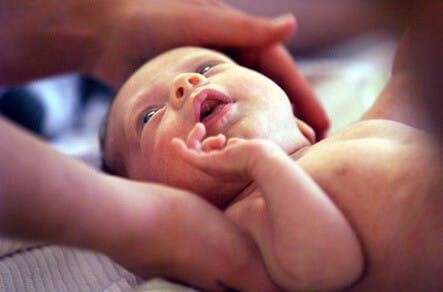Erythema Toxicum: A-to-Z Guide from Diagnosis to Treatment to Prevention

Toxicum? That doesn’t sound good! And the rash itself looks frightening to many parents. Nevertheless, erythema toxicum is an entirely benign condition. It can be confused, however, with more serious illnesses that need urgent treatment.
What is it?
Erythema toxicum is a common, splotchy rash of newborns. It seems to be a result of the skin’s regulatory mechanisms adjusting to life outside the uterus.
Who gets it?
Erythema toxicum is found in about half of all babies. It is less common the earlier babies are born before term.
What are the symptoms?
Some have splotchy red patches. Some have firm yellow or white bumps surrounded by a flare of red. The rash tends to come and go, shifting its location across the body. The palms and soles are often left out.
Is it contagious?
No
How long does it last?
It is most common on day 2 of life, but can first show up at birth or within the first 2 weeks.
The individual splotches may remain in place for only a few hours, or for a number of days. The entire rash may come and go over a couple of weeks.
How is it diagnosed?
Erythema toxicum is usually diagnosed on the physical exam. It is sometimes confused with other benign conditions such as milia, miliaria, or baby acne. It is sometimes also confused with serious infections, such as herpes. If the diagnosis is not clear, lab tests are sometimes required.
How is it treated?
No treatment is necessary.
How can it be prevented?
No prevention is necessary.
Related concepts:
Flea bitten rash of the newborn; Toxic erythema of the newborn, Baby rash, Normal newborn rash.


